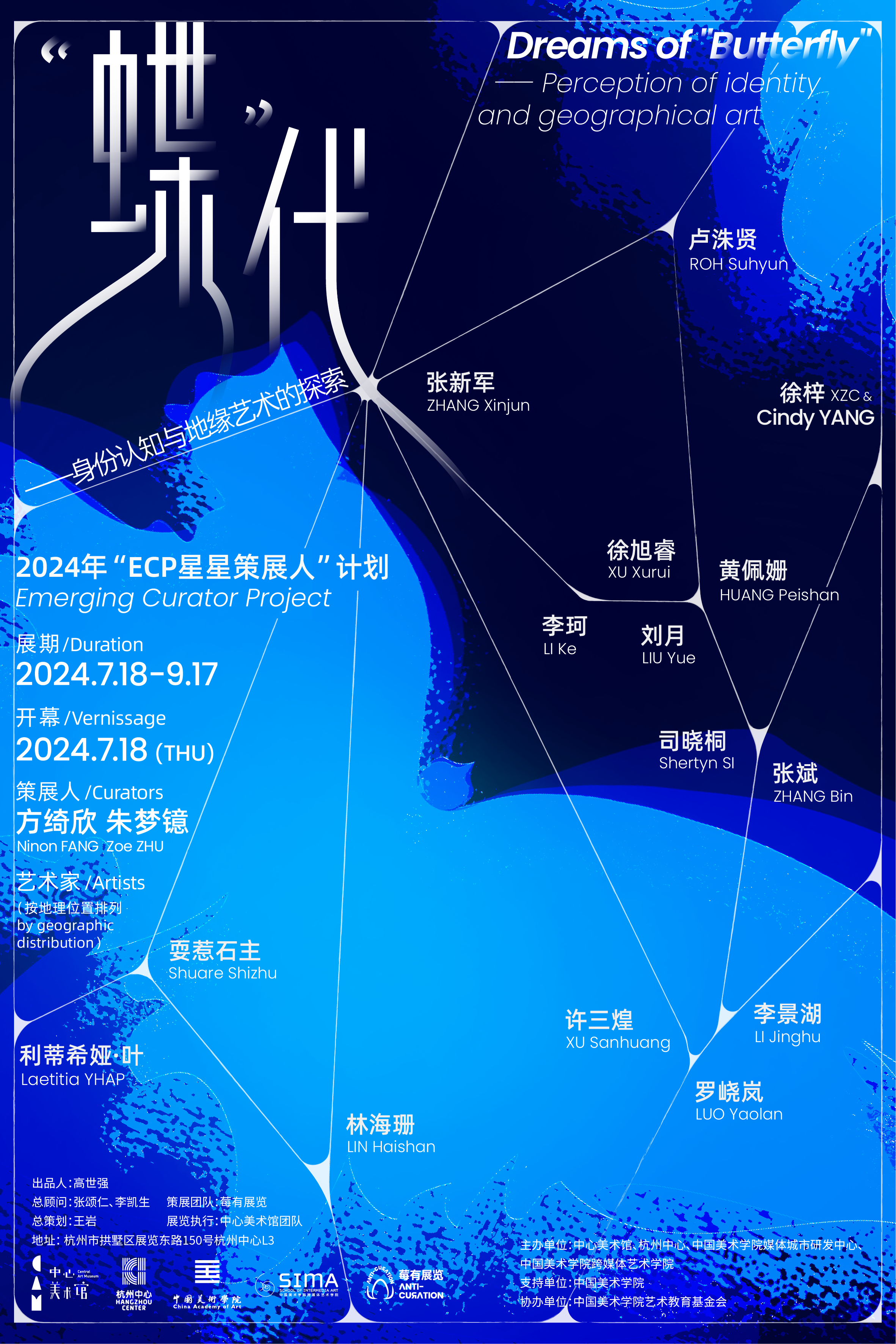"In a world which really is topsy-turvy, the true is a moment of the false."1 As globalization and the flow of information advance, humanity, as the architects of contemporary civilization, has largely lost perception and control over their existence. Instead, most people are overshadowed and influenced by the images in the spectacle of society. This subtle, non-coercive intervention gradually redefines our genuine needs and symbols of identity. The establishment, overthrow, and reconstruction of various rules under social evolution have made it seem that just as we clear one layer of mist, and then we find ourselves deep in the mire. Every accumulation of identity memory will bring a deepening of sensory experience, which is ecstasy, pain, confusion and helplessness. Each iteration and update is like Zhuangzi's dream of a butterfly. The dreamscape we once believed in keeps merging into reality, and the flow between 'I' and the 'butterfly' continues. Are we actively existing or passively creating? "Butterfly" here is a self-reference, an object of emotional projection, and a beautiful delusion.
"I must create my own existence, otherwise it will be completely erased", whether it is Laetitia Yhap, who settled on the seaside in a small community, or Shuare Shizhu, who hails from the Yi ethnic group's mountainous regions, their works reveal a religious sanctity and ritualistic quality through their primal daily records. They abandon rational perspectives, instead, they lean towards the hallucinatory and boundless sensations that crawl within the heart. In their expressions, the human instinct to document and fetishize forms the long river of history, allowing us to see the eternity of the past in the ruins and specimens-like works of Liu Yue, Li Ke, and Zhang Bin. These are akin to contemporary "cave paintings", presenting the most primitive and natural forms of civilization's evolution.
"This is the End of the World. This is where the world ends. Nowhere further to go." Beipiao, a unique condition among a generation in China, symbolizes the longing for the central spectacle of power, including Zhang Xinjun who came to Beijing during the Heiqiao era. In the subsequent "residence, migration, and temporary and unstable creation", the traces left in the suburbs are Zhang's heavy doubts about the current living situation of contemporary people. In contrast, young artists like Xu Xurui, Roh Suhyun, Luo Yaolan and Lin Haishan have all chosen a reverse escape, moving from their central cities to various countries abroad, observing under a detached soul-like perspective in different environments.
"Some familiar environments and things may not make you feel much when you are in them, but when you leave this environment, or this situation has become history and no longer exists, the record of this situation will continue to reappear in your memory in the form of fragments." The dispersion of scenes and the transformation of symbols are Li Jinghu's emotional reconstruction and tender reappearance of a small town in Dongguan that he has never left. The echoes of time resonate through the modern factory where relentless shifts blur the boundaries between day and night. Then, the millennial artists Huang Peishan, Shertyn Si, Xu Sanhuang, and XZC & Cindy YANG, who are fully aligned with the new era, exhibit a stronger desire to shape the future world. They blend the natural with the artificial, creating a symbiotic and transformative coexistence. Underneath this demiurgic pleasure, there may be a philosophical nostalgia of human origin - a spiritual destination exploration that transcends region.
This exhibition aims to explore the changes in human self-portrait and attitudes towards the surrounding environment under the development of contemporary society. Three groups of artists across regions and generations jointly present a "decentralized" chaotic field to the audience, which is a chronicle, drift, and reconstruction of nature and authenticity. This is not a revolutionary and hard-line catharsis, but a variety of détournement from reality, a humid season that persistently infiltrates rigid social discipline, further blurring and alienating the world of the spectacle, providing all attendees with a cautious moment of temporary detachment. Today's world may still be a manipulated reflection after the fire, and the prisoners in it find it difficult to escape. However, we briefly become butterflies in this recurring dream, plunging into the boundless night, merging with the flickering stardust, and becoming part of the vast universe.
[1] Guy Debord, The Society of the Spectacle (1967)
Text:Ninon Fang
Proofread:Qin Xuan
策展人Curators:方绮欣Ninon Fang, 朱梦镱Zoe Zhu
策展团队Curatorial Team:莓有展览策展小组ANTI-CURATION
主办单位Organizers:中心美术馆Central Art Museum, 杭州中心Hangzhou Center,
协办单位Co-organizer:中国美术学院艺术教育基金会China Academy of Art Education Foundation
支持单位Support:中国美术学院China Academy of Art
特别鸣谢|甬道艺术基金会,Hales London and New York,香格纳画廊及所有参展艺术家对本次展览的支持。
Special thanks to Corridor Foundation, Hales London and New York, ShanghART Gallery and all participating artists who generously support the exhibition.
